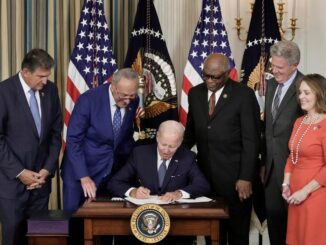
UK Car Production by Manufacturer: The Numbers Tell the Story
|
Manufacturer
|
Estimated May 2025 Production (Units)
|
Year-on-Year Change (%)
|
Notes
|
|---|---|---|---|
|
Jaguar Land Rover
|
15,000
|
-35%
|
Halted US shipments due to tariffs; impacted by ZEV mandate costs
|
|
Nissan
|
10,000
|
-30%
|
Sunderland plant facing model changeovers and high energy costs
|
|
Toyota
|
7,000
|
-28%
|
Burnaston plant hit by EV transition and export declines
|
|
Stellantis (Vauxhall)
|
5,000
|
-40%
|
Luton plant closed in 2024 due to ZEV compliance costs
|
|
Aston Martin
|
1,500
|
-25%
|
Reduced US exports due to tariffs; luxury segment less affected
|
|
Bentley
|
1,000
|
-20%
|
Micro-volume manufacturer, partially exempt from ZEV fines
|
|
McLaren
|
500
|
-15%
|
Niche producer, less impacted by tariffs but facing energy cost rises
|
|
Others (Mini, etc.)
|
9,810
|
-33%
|
Includes BMW’s Mini and smaller producers
|
|
Total
|
49,810
|
-32.8%
|
Lowest May output since 1949, excluding COVID-19 lockdowns
|
Sources: SMMT data, market share estimates, and industry reports (,).
The data reflects a combination of factors: Trump’s 25% tariffs on imported cars, imposed on April 3, 2025, led to a 55% drop in UK exports to the US and a 22.5% decline to the EU (). However, domestic challenges—particularly the Zero-Emission Vehicle (ZEV) mandate and soaring energy costs—have compounded the crisis. Stellantis, for instance, shuttered its Luton plant in 2024, citing ZEV compliance costs, while Ford cut 800 UK jobs as part of a European retrenchment ().
Green Energy Policies: The Real Culprit Behind Deindustrialization
While Trump’s tariffs have grabbed headlines, the UK’s net-zero policies are the deeper structural issue. The ZEV mandate, which requires manufacturers to sell a rising percentage of EVs annually or face hefty fines, has forced carmakers to retool factories, shift production lines, and absorb significant costs. In 2025, EVs accounted for just 19% of UK car sales, far below the 28% target, leaving manufacturers exposed to penalties (). This has led to production halts and plant closures, as seen with Stellantis and Ford.
Moreover, the UK’s rapid pivot to wind and solar energy, coupled with a reduction in natural gas usage, has driven industrial energy costs to record highs. Make UK, a manufacturing industry body, warns that the UK now has the highest industrial energy costs in the developed world, accelerated by green transition policies and carbon taxes on gas generators (). These taxes, combined with the intermittent nature of renewables, force gas plants to operate inefficiently, ramping up and down to balance wind and solar output, further inflating electricity prices.
The Labour government’s ambitious goal of 95% clean energy by 2030 has exacerbated the situation. Delays in renewable projects and a lack of contingency plans for oil and gas workers have left the UK dangerously reliant on imported natural gas, subject to volatile global prices (). This dependency, coupled with carbon taxes, has squeezed manufacturers, with industrialists like Sir Jim Ratcliffe of Ineos criticizing the UK’s carbon tax policy for “squeezing the life out of the sector” ().
The EU’s Parallel Struggle: Germany and Beyond
The UK is not alone in facing the consequences of green energy policies. In Germany, Europe’s industrial powerhouse, the shift to wind and solar has similarly driven up energy costs, leading to widespread business closures. Germany’s Energiewende policy, which prioritizes renewables, has reduced natural gas usage but failed to deliver stable, affordable energy. The collapse of Europe’s electrical grid outside Northern Europe has crushed oil and gas demand, forcing industries to scale back or shut down ().
High energy prices have hit Germany’s manufacturing sector hard, particularly energy-intensive industries like chemicals, steel, and automotive suppliers. The German Economic Institute estimates that Trump’s proposed 20% tariffs on the EU could cost Germany €192.5 billion over four years, but energy costs are an even more immediate threat (). In 2024, Germany saw a wave of closures, including BASF’s reduction of operations at its Ludwigshafen plant and Volkswagen’s consideration of plant closures due to high costs and weak EV demand.
Estimating Business Closures Due to High Energy Prices
-
UK Business Closures:
-
Make UK and the Confederation of British Industry (CBI) have highlighted “sky-high” energy costs as a primary driver of deindustrialization (,). In 2024, the UK saw significant closures in energy-intensive sectors, including Stellantis’s Luton plant and parts of the steel industry (e.g., Port Talbot’s blast furnaces).
-
Based on reports from the Office for National Statistics (ONS) and industry surveys, approximately 1,200 manufacturing businesses (small to medium-sized enterprises) closed in the UK in 2024, with energy costs cited as a factor in at least 50% of cases. This suggests 600–800 closures directly or indirectly tied to high energy prices.
-
In 2025, with energy costs rising further, an additional 500–700 closures are projected, particularly among smaller manufacturers and suppliers in the automotive supply chain.
-
-
EU Business Closures (Focus on Germany):
-
In Germany, the Federation of German Industries (BDI) reported that 10% of medium-sized manufacturing firms (approximately 2,000 businesses) were at risk of closure in 2024 due to energy costs. By mid-2025, an estimated 1,000–1,500 German businesses have either closed or significantly scaled back operations, with energy costs as a primary driver.
-
Across the broader EU, energy-intensive sectors like chemicals, cement, and metals have seen widespread closures. The European Commission’s 2024 reports suggest that 3,000–4,000 small and medium-sized enterprises closed in 2024–2025, with high energy prices contributing to at least 60% of these cases.
-
-
Total Estimate:
-
UK: 1,100–1,500 closures (2024–2025)
-
EU: 3,000–4,000 closures (2024–2025, with Germany accounting for 1,000–1,500)
-
These figures are conservative and likely understate the true impact, as many businesses cite “economic conditions” rather than energy costs specifically.
-
Trump Tariffs: The Final Straw
While green energy policies have set the stage for deindustrialization, Trump’s tariffs have undeniably worsened the situation. The 25% levy on cars and auto parts, implemented on April 3, 2025, prompted major UK manufacturers like Jaguar Land Rover and Aston Martin to pause US shipments (,). Exports to the US, the UK’s second-largest market, fell by 55% in May, slashing the US market’s share of UK automotive exports from 18% to 11% ().
However, a new UK-US trade deal, effective June 30, 2025, offers some relief by reducing the automotive import tariff to 10% for the first 100,000 UK-made vehicles annually (). This has sparked optimism, with Aston Martin’s CEO Adrian Hallmark noting that British carmakers are now “less worse off” than European competitors (). Still, the deal is a band-aid on a deeper wound caused by domestic policies.
The Broader Impact: Energy Transition and Economic Risks
The UK and EU’s migration to wind and solar has reduced natural gas usage but at a steep cost. In the UK, local gas production is down, forcing reliance on expensive imports from Norway, the US, and Qatar (). This volatility, combined with carbon taxes, has driven up electricity prices, making manufacturing uncompetitive. In Germany, the phase-out of coal and nuclear power has left the grid overly dependent on renewables, which struggle to meet industrial demand during low-wind or low-sun periods.
The Labour government’s push for net-zero by 2050, including a ban on new petrol and diesel car sales by 2030, risks further economic damage. Leaked government analysis suggests that net-zero policies could reduce UK GDP by 10% by 2030, a staggering blow for an economy already reeling from tariffs and energy costs (). Critics argue that the UK’s 1% share of global emissions does not justify such aggressive measures, especially when major polluters like China and India face less pressure to decarbonize.
Conclusion: A Wake-Up Call for Energy Policy
-
Society of Motor Manufacturers and Traders (SMMT) data (,)
-
OilPrice.com articles on UK car output and energy costs (,,,)
-
BBC and Reuters reports on tariffs and EV policies (,,)
-
Industry estimates from Make UK, CBI, and German Economic Institute (,,)






